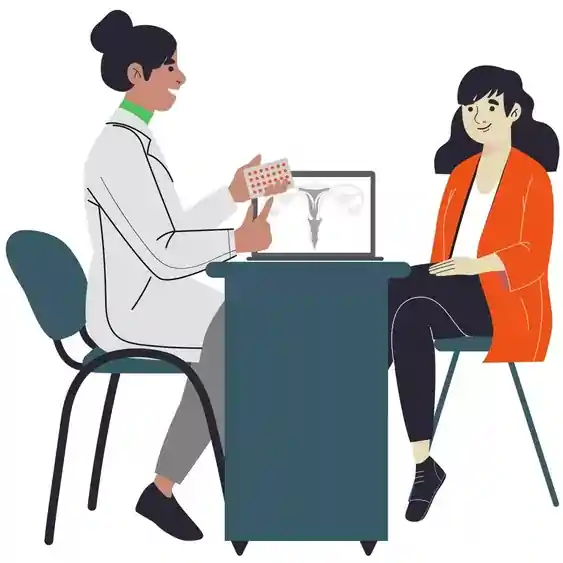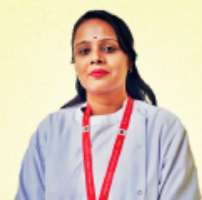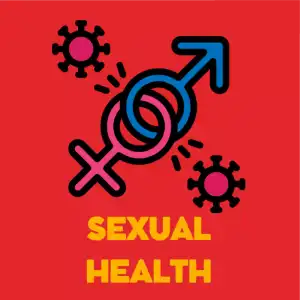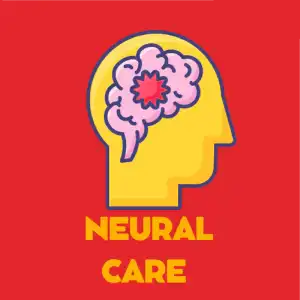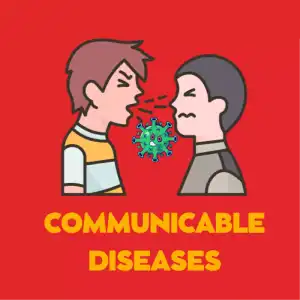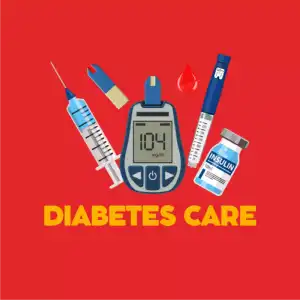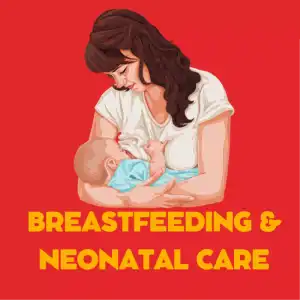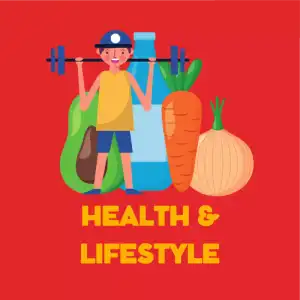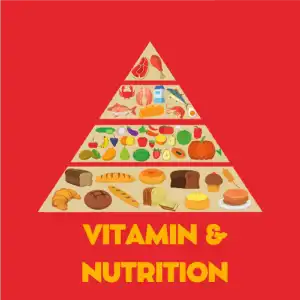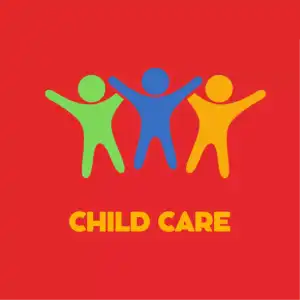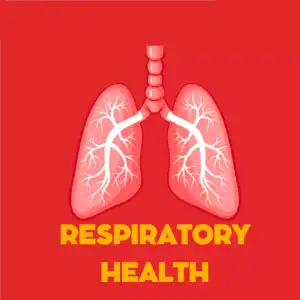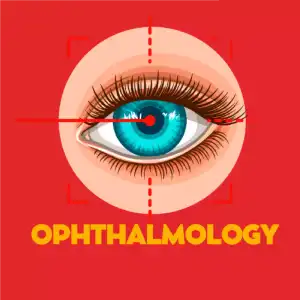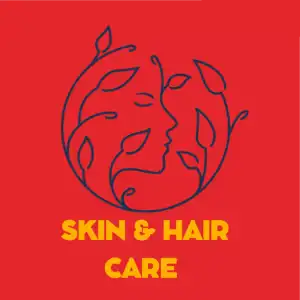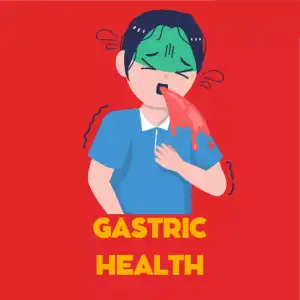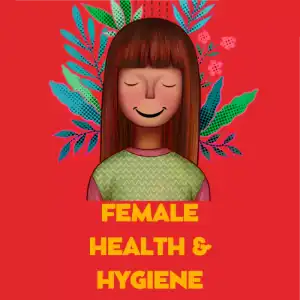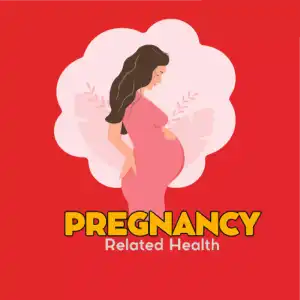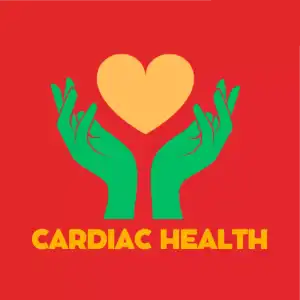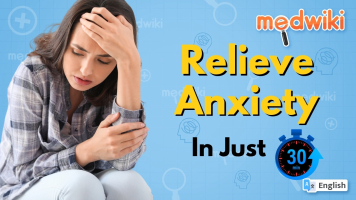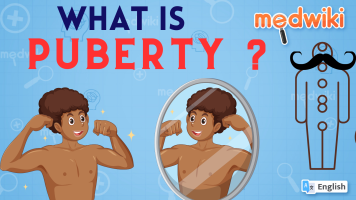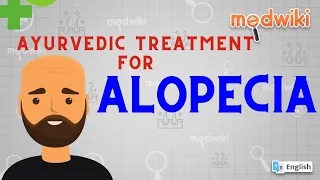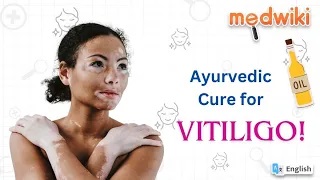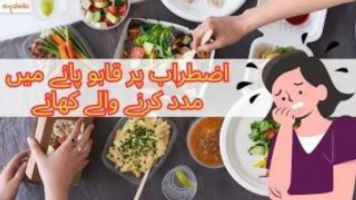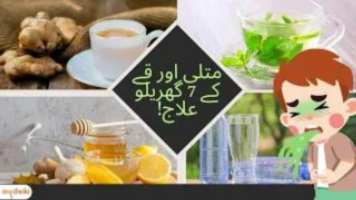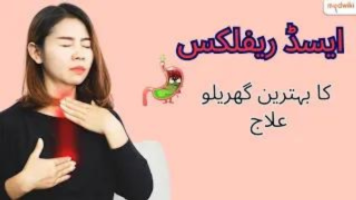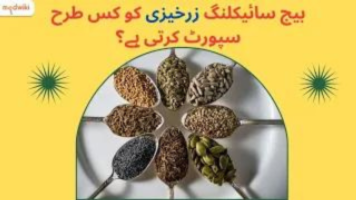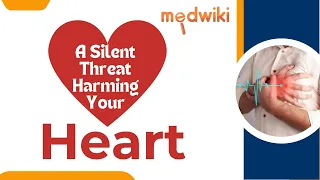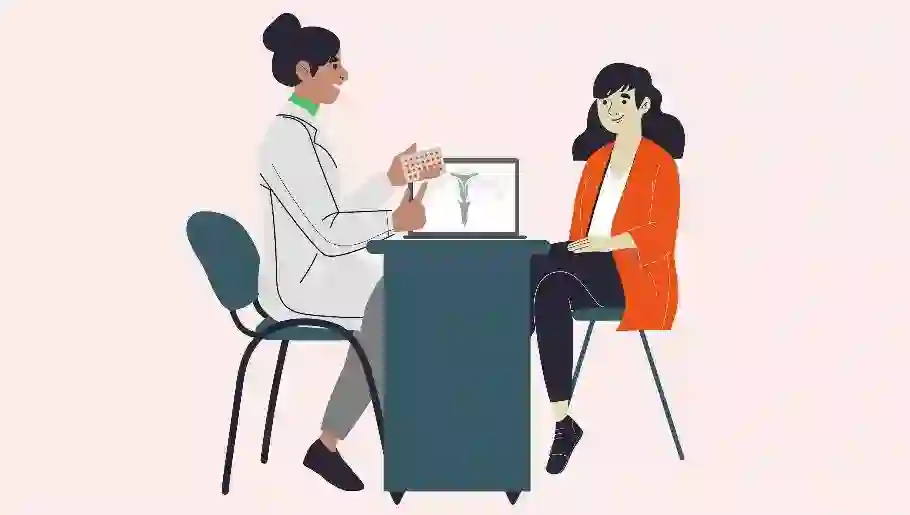
Your medications, simply explained
Answers to your most common questions fact-checked by pharmacists
Med Talks: Expert Health Advice
India’s Top Qualified Doctors Are Here To Help
Trusted by Over 100,000 People
Conditions
Mental Health and Care
How do the mentioned deep breathing techniques, nature therapy, affirmations, and calming beverages contribute to creating a 30-minute routine for relieving anxiety?These follow are:-Introduction:Acknowledges the impact of anxiety on mental health.Promises guidance on relieving anxiety in 30 minutes.Deep Breathing Techniques:Inhale through the nose for 5 seconds, hold for 2 seconds, and exhale for 8 seconds.Introduces the 4-7-8 breathing technique for further relaxation.Nature Therapy:Advocates taking a stroll in the park to disconnect and reduce anxiety.Mentions proven benefits of connecting with nature for mood improvement.Affirmations and Positive Thoughts:Encourages self-motivation through affirmations.Urges individuals to believe in their capability to manage anxiety.Calming Beverages:Suggests sipping chamomile tea for its calming properties.Offers alternatives like warm milk or lemon balm tea to relax the mind.Conclusion:Emphasizes the simplicity and effectiveness of the techniques.Encourages daily practice for a peaceful and anxiety-free life.Disclaimer:- This information is intended to supplement, not substitute, advice from your healthcare provider or doctor. It does not cover all possible uses, precautions, interactions, or side effects, and may not be appropriate for your specific healthcare needs. Always consult with your doctor or another qualified healthcare provider before modifying or discontinuing any prescribed portion of your healthcare plan or treatment, in order to determine the best course of therapy for you. Do not ignore or delay professional medical advice based on anything you have seen or read on Medwiki.Find us at:https://www.instagram.com/medwiki_/?h...https://twitter.com/medwiki_inchttps://www.facebook.com/medwiki.co.in/
Sexual and Reproductive Health
Most of the children show changes in behavior during Puberty.The random mood swings, high tempers and sudden breakdowns all are because of the increasing sexual hormones in the body.Let's know more about Puberty.What is Puberty?It is a process in which the body undergoes physical, hormonal and emotional changes and attains sexual maturity and is ready for reproduction.What causes Puberty?The sex hormones, testosterone in males and estrogen and progesterone in females and some chemical messengers triggers the brain to start Puberty.The sexual hormones start the development of reproductive organs and secondary sexual characters in both males and females.At what age Puberty comes?Usually, males attain puberty at the age of 14 years while the females at the age of 11 years.Although this may vary in person to person. In few children the puberty comes very early like around at 9 years in girls and 11 years in boys. And it can be delayed by 15 to 18 years.The reason of this can be:Unknown causesStressGeneticsMedicationsWatching adult contents at young ageUse of mobiles/TVEnvironment influence- bad parenting, bad company of friendsDisclaimer:-This information is not a substitute for medical advice. Consult your healthcare provider before making any changes to your treatment.Do not ignore or delay professional medical advice based on anything you have seen or read on Medwiki. Find us at: https://www.instagram.com/medwiki_/?h... https://medwiki.co.in/ https://twitter.com/medwiki_inc https://www.facebook.com/medwiki.co.in/
Communicable Diseases
Have you heard about the new COVID-19 variant JN.1?A recent surge in cases has led to the detection of this variant, prompting states to remain vigilant.The first case of this strain was detected in Thiruvananthapuram, Kerala, on 8th Dec. 2023 .This variant, a descendant of the Omicron sub-variant BA.2.86, has been classified as a 'variant of interest' by the World Health Organization.What are the Symptoms of new COVID-19 variant JN.1?Here are they few symptoms of JN.1 Variant:-feverrunny nosesore throatheadachesminor gastrointestinal issuesfatiguemuscle weakness.It is crucial to note, however, that these symptoms are not distinct from other respiratory diseases such as the flu. If a patient presents these symptoms and they are of mild nature, only symptomatic care is typically required.A critical sign to watch out for is breathlessness - a potential indication of seriousness.The risk factors for severe disease are higher in elderly individuals and those with compromised immune systems. Generally, the severity of these symptoms is mild, with most patients able to recuperate at home.Despite the potential severity of this new variant, the global public health risk from JN.1 is deemed low by the WHO. This is due to the effectiveness of vaccinations targeting the virus's spike protein against JN.1.In response to the detection of this new variant, states have been urged to increase RT-PCR tests and send positive samples for genome sequencing to INSACOG laboratories.Additionally, states have been advised to implement necessary measures for the upcoming festive season and promote respiratory hygiene to minimize transmission risk. Moreover, the active participation of public and private health facilities is crucial in this situation. States are urged to enhance their preparedness and response capacities.In conclusion, it is vital to stay informed, follow public health guidelines, report symptoms promptly, and adhere to respiratory hygiene. Together, we can tackle the challenges and keep our communities safe. Stay tuned for further updates as the situationevolves.Disclaimer:-This information is not a substitute for medical advice. Consult your healthcare provider before making any changes to your treatment.Do not ignore or delay professional medical advice based on anything you have seen or read on Medwiki.Find us at:https://www.instagram.com/medwiki_/?h...https://twitter.com/medwiki_inchttps://www.facebook.com/medwiki.co.in/
Health and Lifestyle
In Ayurveda, the treatment of khalitya or alopecia is done using following steps:Shodhana (Purification Therapy): This treatment of alopecia involves an appropriate purva karma or preparatory actions, such as swedan that is sweating and snehan that is oleation before Shodhan Karma.Shodhan Karma is the first step of treating imbalance in Kapha, Pitta or Vata dosha. It involves using various processes like: Vaman (emesis), Virechan (purgation), or Shodhan Basti (enema) depending on the specified dosha imbalance. And is completed by (Sansarjan Karma) or post-cleansing food and lifestyle routine.Prachaan karma:- This treatment of alopecia involves using shikakai and water, to completely wash the scalp and clean the bald area using sterile cotton pad and an antiseptic solution, then using sterile needles or surgical knife to puncture the epidermal layer of the scalp and lastly cleaning the area again with antiseptic solution.Local Application: It involves using various lepa or pastes or oils described in Ayurvedic texts such as Gunjadi lepa, Bhalatak lepa, and Karveer rasa lepa which is applied in the morning before bathing. Oils like Vidarigandhadi tailum, Bhringraj oil, and Nilikaadi oil can also be massaged onto the scalp.Nasya (Nasal Therapy): It involves face massage or steam application followed by applying medicated oil like: Neem oil or Anu Taila into each nostril, followed by gargle with warm water.Siraveda (Blood-letting): It involves the removal of impurities from the blood. This therapy can be helpful in cases of Khalitya, as it can help eliminate toxins from the blood, improve blood circulation to the scalp, and nourish the hair follicles, promoting hair regrowthSource1:-Pal, S., Paradkar, H., Attar, S., & Pathrikar, A. (2023). Ayurvedic approach for managing Indralupta (Alopecia Areata): A Case Study. Journal of Ayurveda and Integrated Medical Sciences, 8(11), 240-245.Source2:-Singhal, P., Vyas, V., Chhayani, P., Patel, M., & Gupta, S. N. (2022). Ayurvedic management of alopecia areata: A case report.Journal of Ayurveda and integrative medicine,13(3), 100604. https://doi.org/10.1016/j.jaim.2022.100604Disclaimer:-This information is not a substitute for medical advice. Consult your healthcare provider before making any changes to your treatment.Do not ignore or delay professional medical advice based on anything you have seen or read on Medwiki.Find us at:https://www.instagram.com/medwiki_/?h…https://twitter.com/medwiki_inchttps://www.facebook.com/medwiki.co.in
In Ayurveda, there are various treatments for vitiligo, which are:Panchakarma: It aims to eliminate ama, or toxins, from the body by different therapies such as Vamana(Inducing vomit), Virechan(purgation), Basti (Enema), Nasya (Nasal administration), and Raktamokshana (bloodletting).This therapy helps to treat vitiligo(Shwitra) by reduce inflammation, cleansing the body, and balancing doshas, (both Pitta and Vata).Medicinal Herbs:Bakuchi (Psoralea Corylifolia Linn): It is an essential herb in Ayurveda that have anti-inflammatory, antioxidant, and antibacterial properties, that can cure several skin diseases. It helps in reducing and normalising skin pigmentation.Bakuchi churna along with honey or coconut oil is helpful to prevent the destruction of pigment forming cell.A topical application of diluted Bakuchi oil, can be used on the affected areas.Manjistha Powder: It is a herb that might help to increase pigmentation when used externally.Other Herbs: Depending on the illness, external use of herbs like: Khadira, Bhallataka, Mulaka, Daruharidra, Aragvadha, Haritaki, and Bedag Lepam may be required.Several traditional Ayurvedic formulations are usually used to treat vitiligo, such as Panchanana Taila (oil), Bakuchi Taila (oil), Mahatiktaka Ghrita (ghee), Arogyavardhini Vati (tablets), and Tuvarakadi Taila (oil).Source1:-Dhanik, A., Sujatha, N., & Rai, N. P. (2011). Clinical evaluation of the efficacy of Shvitrahara kashaya and lepa in vitiligo. Ayu, 32(1), 66–69. https://doi.org/10.4103/0974-8520.85731Source2:-Bahatkar, Gayatri & Jadhao, Monika & Kamdi, Payal & Parwe, Shweta. (2021). An Ayurvedic and Modern Review on Valued Medicinal Plant -Bakuchi (Psoralea corylifolia Linn.). Drugs and Cell Therapies in Hematology. 10. 3730-3737.Disclaimer:-This information is not a substitute for medical advice. Consult your healthcare provider before making any changes to your treatment.Do not ignore or delay professional medical advice based on anything you have seen or read on Medwiki.Find us at:https://www.instagram.com/medwiki_/?h…https://twitter.com/medwiki_inchttps://www.facebook.com/medwiki.co.in
ڈارک چاکلیٹ: کچھ کھٹی پھلوں کے ساتھ ڈارک چاکلیٹ کا لطف اُٹھائیں۔ اس میں آئرن اور پولی فینول ہوتے ہیں جو سیروٹونن کی سطح کو بڑھاتے ہیں اور ہمارے مزاج کو بہتر بناتے ہیں۔سبز چائے: سبز چائے میں دو طاقتور اینٹی آکسیڈنٹس ای جی سی جی (ایپیگلّکٹچین گئلےت) ہوتے ہیں جو تناؤ سے متعلقہ علامات جیسے کہ ڈپریشن اور اضطراب کو کم کرتے ہیں۔چیا سیڈز یا فلیکس سیڈز: فیٹی فش، چیا سیڈز، فلیکس سیڈز اور اخروٹ اومیگا تھری کے بہترین ذرائع ہیں، جو دماغی صحت اور نشوونما کے لیے ضروری ہیں۔انگور: انگور میں ایک بہت طاقتور اینٹی آکسیڈنٹ ریسویراٹرول ہوتا ہے جو اعصابی نظام کی حفاظت کرتا ہے اور دماغی افعال کو بہتر بناتا ہے۔کیلے: کیلے میں ٹرپٹوفن نامی ایک ضروری امینو ایسڈ ہوتا ہے جو سیروٹونن میں تبدیل ہوتا ہے اور دماغ کو آرام دیتا ہے۔Source:-Gomez-Pinilla, F., & Gomez, A. G. (2011). The influence of dietary factors in central nervous system plasticity and injury recovery. PM & R : the journal of injury, function, and rehabilitation, 3(6 Suppl 1), S111–S116. https://doi.org/10.1016/j.pmrj.2011.03.001Disclaimer:-This information is not a substitute for medical advice. Consult your healthcare provider before making any changes to your treatment. Do not ignore or delay professional medical advice based on anything you have seen or read on Medwiki.Find us at:https://www.instagram.com/medwiki_/?h..https://twitter.com/medwiki_inchttps://www.facebook.com/medwiki.co.in/
بالغین:بخار کو عموماً تب سمجھا جاتا ہے جب جسم کا درجہ حرارت 100.4 ڈگری فارن ہائیٹ (38 ڈگری سیلسیس) سے زیادہ ہو۔بے خطری کی دوڑ: بخار کو خطرہ نہیں سمجھا جاتا جب تک کہ یہ 103 ڈگری فارن ہائیٹ (39.4 ڈگری سیلسیس) یا اس سے زیادہ نہ ہو۔بچے:شیر خوار بچوں (0 سے 3 ماہ):بخار کو زیادہ سمجھا جاتا ہے جب درجہ حرارت 100.4 ڈگری فارن ہائیٹ (38 ڈگری سیلسیس) یا اس سے زیادہ ہو۔3 سے 6 ماہ کے بچوں:درجہ حرارت 102 ڈگری فارن ہائیٹ (38.9 ڈگری سیلسیس) سے زیادہ ہونے یا تکلیف کی علامات کے لیے طبی مشورہ ضروری ہوتا ہے۔7 سے 24 ماہ کے بچوں:ایک دن سے زیادہ درجہ حرارت 102 ڈگری فارن ہائیٹ (38.9 ڈگری سیلسیس) کے ساتھ، طبی مشورہ لینا ضروری ہوتا ہے۔تیز بخار سے وابستہ حالات:کم درجے کا بخار (تقریباً 100.4 ڈگری فارن ہائیٹ سے 102 ڈگری فارن ہائیٹ):معمولی انفیکشن، مثلاً نزلہ یا اوپری سانس کی نالی کے انفیکشن۔تیز بخار (102 ڈگری فارن ہائیٹ سے اوپر):زیادہ اہم انفیکشن، مثلاً انفلوئنزا یا بیکٹیریل انفیکشن۔بخار میں مبتلا بچے:بچہ ممکنہ طور پر ٹھیک ہے اگر جوابدہ ہو، اچھا کھانا کھاتا ہو، اور اضافی علامات کی کمی ہو۔طبی امداد کی ضرورت ہوتی ہے اگر پانی کی کمی، الٹی، چڑچڑاپن، یا سستی جیسی علامات نمودار ہوں۔Source:-(n.d.). https://www.pennmedicine.org/for-patients-and-visitors/patient-information/conditions-treated-a-to-z/feverDisclaimer:-This information is not a substitute for medical advice. Consult your healthcare provider before making any changes to your treatment. Do not ignore or delay professional medical advice based on anything you have seen or read on Medwiki.Find us at:https://www.instagram.com/medwiki_/?h...https://twitter.com/medwiki_inchttps://www.facebook.com/medwiki.co.in/
Respiratory Health
صاف مائعات پینا: آخری الٹی کے بعد تقریباً 30 منٹ بعد صاف مائعات مثل پانی یا جڑی بوٹیوں والی چائے پینا متلی کو دور کرسکتا ہے اور پانی کی کمی کو روک سکتا ہے۔مشروبات سے پرہیز: الکحل، کاربونیٹیڈ مشروبات، اور تیز بو سے بچیں جو متلی کا باعث بن سکتی ہیں۔ادرک کی چائے: ادرک کی چائے یا سخت ادرک کی کینڈیاں متلی کے احساسات کو کم کرنے میں مددگار ہوتی ہیں۔اروما تھراپی: لیوینڈر، کیمومائل، لیموں کا تیل، پیپرمنٹ، گلاب اور لونگ جیسی خوشبوؤں کی استعمال سے متلی کو کم کیا جا سکتا ہے۔P-6 پوائنٹ پر ایکیوپریشر: انگلی کی اندرونی کلائی پر P-6 پوائنٹ پر ایکیوپریشر لگانے سے متلی کو دور کیا جا سکتا ہے۔چھوٹے کھانے کھانا: ٹوسٹ، کیلے اور میشڈ آلو کے چھوٹے چھوٹے کاٹے کھانا پیٹ کو بھرنے اور حل کرنے میں مدد فراہم کرتا ہے۔پیپرمنٹ چائے اور لیموں کا تیل: پیپرمنٹ چائے اور لیموں کا تیل سردی اور کھٹی بو فراہم کرسکتا ہے جو حمل سے متعلق متلی کو کم کرنے میں مددگار ہوتا ہے۔یاد رہے کہ اگر قے ایک ہفتے سے زیادہ جاری رہتی ہے یا شدید پانی کی کمی کے آثار ہیں، تو طبی امداد حاصل کریں۔Source:-How to stop vomiting: Home remedies. (2024, February 17). How to stop vomiting: Home remedies. https://www.medicalnewstoday.com/articles/318851Disclaimer:-This information is not a substitute for medical advice. Consult your healthcare provider before making any changes to your treatment. Do not ignore or delay professional medical advice based on anything you have seen or read on Medwiki.Find us at:https://www.instagram.com/medwiki_/?h...https://twitter.com/medwiki_inchttps://www.facebook.com/medwiki.co.in/
Gastric Health
کھانے کے بعد اور لیٹنے سے پہلے 2-3 گھنٹے انتظار کریں۔ اپنے بستر کے سر کو اپنے پیٹ سے 6 انچ اونچا کریں یا تو ویج تکیے یا بستر کے ٹانگوں کے بلاکس کا استعمال کریں۔اعتدال میں چبانے سے لعاب کی پیداوار کو تحریک دے کر سینے کی جلن کو کم کرنے میں مدد مل سکتی ہے۔ مصنوعی مٹھاس اور پودینے کے گم سے پرہیز کریں تاکہ ممکنہ گیس اور اپھارہ کے مسائل کو روکا جا سکے۔مسالیدار کھانوں، زیادہ چکنائی والی اشیاء، پودینہ، کافی، چاکلیٹ، الکحل، کھٹی پھل اور ٹماٹر سے پرہیز کریں۔پیٹ کی چربی کو کم کریں۔ وزن کم کرنے سے پیٹ پر دباؤ کم ہو سکتا ہے اور سینے کی جلن کو روکا جا سکتا ہے۔تمباکو نوشی اور تمباکو نوشی چھوڑ دیں۔ سگریٹ میں موجود کیمیکل غذائی نالی کو کمزور کرتے ہیں، جس سے تیزابیت پیدا ہوتی ہے۔ادرک (اعتدال میں) کھانے سے ایسڈ ریفلکس میں مدد مل سکتی ہے۔ڈھیلے کپڑے پہنیں اور کمر کے گرد تنگ بیلٹ سے پرہیز کریں تاکہ معدے کو دبانے سے روکا جا سکے جو تیزابیت کا باعث بنتا ہے۔Source:-"1.National Institute of Diabetes and Digestive and Kidney Diseases. 2.Treatment of Indigestion. Moazzez R, Bartlett D, Anggiansah A. The effect of chewing sugar-free gum on gastro-esophageal reflux. Journal of Dental Research. 2005;84(11):1062-1065. doi:10.1177/154405910508401118 "Disclaimer:-This information is not a substitute for medical advice. Consult your healthcare provider before making any changes to your treatment. Do not ignore or delay professional medical advice based on anything you have seen or read on Medwiki.Find us at:https://www.instagram.com/medwiki_/?h...https://twitter.com/medwiki_inchttps://www.facebook.com/medwiki.co.in/
Pregnancy and Related Health
سن اور کدو کے بیج، پروٹین، ریشوں، زنک، اور اومیگا 3 فیٹی ایسڈ:انڈوژنز کو بہتر بناتے ہیں اور ماہواری کے ابتدائی مرحلے میں پٹک کی نشوونما میں مدد کرتے ہیں۔تل اور سورج موکھی کے بیج:ماہواری کے دوران انڈے کو چھوڑنے میں مدد کرتے ہیں۔ماہواری کے دوسرے مرحلے میں بیج کے چکر پر عمل کرنے سے اینڈومیٹریال استر کی صحت اور مضبوطی بہتر ہوتی ہے۔پروجیسٹرون کی اعلی سطح:حاملہ ہونے میں رکاوٹ بن سکتی ہے، بیج کا چکر ایسٹروجن اور پروجیسٹرون کے درمیان توازن برقرار رکھتا ہے، مؤثر طریقے سے پروجیسٹرون کی سطح کو کنٹرول کرتا ہے۔انسولین کی خلاف مزاحمت کم کرنا:ہائی بلڈ شوگر لیول اور اولیگومینوریا اور سیکنڈری امینوریا جیسے حالات سے منسلک ہونے والی امراض سے بچانے میں مدد دیتا ہے۔Source:-How Seed Cycling Supports Women's Hormonal Health. (2024, February 15). How Seed Cycling Supports Women's Hormonal Health. https://nunm.edu/2019/02/seed-cycling/Disclaimer:-This information is not a substitute for medical advice. Consult your healthcare provider before making any changes to your treatment. Do not ignore or delay professional medical advice based on anything you have seen or read on Medwiki.Find us at:https://www.instagram.com/medwiki_/?h...https://twitter.com/medwiki_inchttps://www.facebook.com/medwiki.co.in/
Cardiac Health
Why is palm oil considered unhealthy, especially concerning cholesterol levels and potential risks to heart health?These follow are :-A comparison study between palm oil, olive oil, and coconut oil revealed that palm oil, when consumed, can elevate levels of "bad" cholesterol. This effect was particularly pronounced in healthy individuals.Variations in tocotrienol levels and saturated fats between fresh and aged palm oil can contribute to cholesterol buildup in arteries.Palm oil, containing approximately 34% saturated fat, notably palmitic acid from palm kernel oil, poses an increased risk of heart disease and other health issues upon consumption.Studies indicate that the presence of palmitic acid in palm oil can reduce mice's responsiveness to hormones like leptin and insulin, potentially increasing appetite and leading to overeating.Source:-https://indianexpress.com/article/lifestyle/health/palm-oil-what-is-it-should-you-consume-7276057/Disclaimer:-This information is not a substitute for medical advice. Consult your healthcare provider before making any changes to your treatment. Do not ignore or delay professional medical advice based on anything you have seen or read on Medwiki.Find us at:https://www.instagram.com/medwiki_/?h...https://twitter.com/medwiki_inchttps://www.facebook.com/medwiki.co.in/
What are some risk factors for high cholesterol?Understanding High Cholesterol and Heart Health:High Cholesterol as a Risk Factor:Major cause of mortality in India, contributing to 28% of fatalities.Elevated prevalence of cardiovascular disease is a significant concern for public health.Cholesterol Overview:Cholesterol is a vital substance for proper body function, present in the blood.Elevated cholesterol levels lead to plaque buildup in arteries, increasing the risk of heart disease and stroke.Risk Factors for High Cholesterol:Genetics:Some individuals may have a genetic predisposition to high cholesterol.Diet:Consumption of saturated fats, trans fats, and cholesterol-rich foods raises the risk.Lifestyle:Sedentary behavior and lack of physical activity contribute to high cholesterol.Medical Conditions:Diabetes, hypothyroidism, liver or kidney disease elevate the risk.Regular Cholesterol Checks:Crucial, especially if having risk factors.Allows for early detection and intervention.Lifestyle Modifications for Heart Health:Diet Improvement:Reduce intake of saturated and trans fats.Physical Activity:Increase exercise and avoid a sedentary lifestyle.Smoking Cessation:Quit smoking for overall heart health.Medical Intervention:Medications:Statins can help manage high cholesterol levels.Holistic Approach for Heart Health:Making small lifestyle changes and addressing risk factors contributes to overall heart health.
How does height relate to the risk of atrial fibrillation (AFib), according to a recent study by Penn Medicine?These follow are:-Recent study by Penn Medicine reveals a strong link between height and the risk of atrial fibrillation (AFib).For every one-inch increase in height, there is approximately a three percent increase in the risk of AFib.Height is considered a causal risk factor for AFib, independent of other clinical factors.AFib is a common abnormal heart rhythm that can lead to stroke, heart failure, and other complications.Observational studies have previously suggested a higher risk of AFib in taller individuals.The study used data from genetic variants associated with height and AFib, indicating a potential genetic link.Increased height may contribute to AFib, and tall individuals may benefit from AFib screening.AFib affects over 33 million people worldwide and is associated with various clinical risk factors.It's essential for tall individuals to be aware of their increased AFib risk and discuss screening with their doctor.Source:-https://www.pennmedicine.org/news/news-releases/2019/november/taller-people-have-increased-risk-for-developing-atrial-fibrillationDisclaimer:- This information is intended to supplement, not substitute, advice from your healthcare provider or doctor. It does not cover all possible uses, precautions, interactions, or side effects, and may not be appropriate for your specific healthcare needs. Always consult with your doctor or another qualified healthcare provider before modifying or discontinuing any prescribed portion of your healthcare plan or treatment, in order to determine the best course of therapy for you. Do not ignore or delay professional medical advice based on anything you have seen or read on Medwiki.Find us at:https://www.instagram.com/medwiki_/?h...https://twitter.com/medwiki_inchttps://www.facebook.com/medwiki.co.in/
FEATURED BY
India’s Largest Platform
For Health Care Videos
Visitors
Videos
Countries
Health Conditions
Popular Categories
@2024 Medwiki Pvt Ltd. All Rights Reserved

